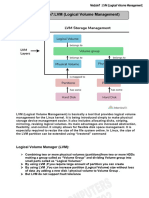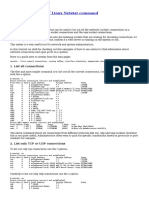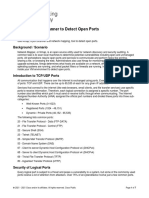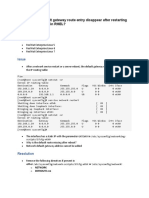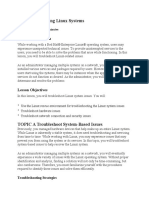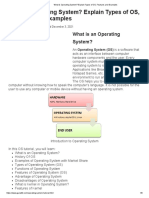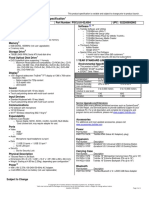0% found this document useful (0 votes)
239 views33 pagesHow To Check Open Ports in Linux
1. The document discusses ports in computer networking and describes various methods to list open ports in Linux, including using the /etc/services file, netstat, ss, lsof, nmap, and netcat commands.
2. Ports are logical communication endpoints that differentiate processes and applications, with common protocols like TCP and UDP using port numbers along with IP addresses for network communication.
3. Ports are divided into system ports (0-1023), registered user ports (1024-49151), and private dynamic ports (49152-65535).
Uploaded by
iftikhar ahmedCopyright
© © All Rights Reserved
We take content rights seriously. If you suspect this is your content, claim it here.
Available Formats
Download as DOCX, PDF, TXT or read online on Scribd
0% found this document useful (0 votes)
239 views33 pagesHow To Check Open Ports in Linux
1. The document discusses ports in computer networking and describes various methods to list open ports in Linux, including using the /etc/services file, netstat, ss, lsof, nmap, and netcat commands.
2. Ports are logical communication endpoints that differentiate processes and applications, with common protocols like TCP and UDP using port numbers along with IP addresses for network communication.
3. Ports are divided into system ports (0-1023), registered user ports (1024-49151), and private dynamic ports (49152-65535).
Uploaded by
iftikhar ahmedCopyright
© © All Rights Reserved
We take content rights seriously. If you suspect this is your content, claim it here.
Available Formats
Download as DOCX, PDF, TXT or read online on Scribd
/ 33

